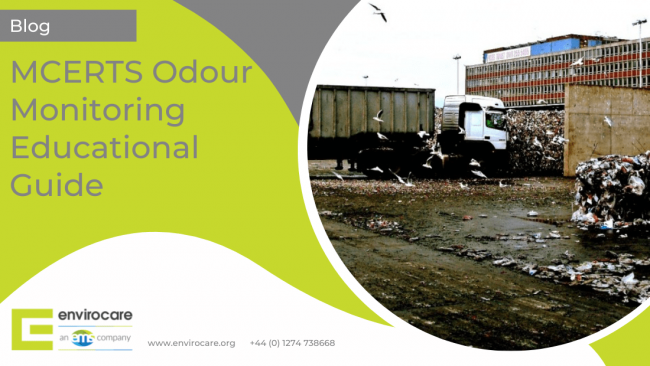MCERTS Odour Monitoring Educational Guide
17 January 2014

The usual driver for carrying out MCERTS odour monitoring is the fact that there has been a complaint either directly to you or to the regulatory authority. This will invariably have come from a member of the public. The complainant and/or regulating authority will want to know that you take their complaint seriously and that you will be taking action. You will need to know where the odour is coming from and what the odour is. You may already know but what you won’t know is how strong it is. Therefore the first task is to establish the intensity of the odour by measuring in an internationally recognised way resulting in a value for its strength in European Odour Units. Using Environment Agency Technical Guidance the number and location of samples required can be determined. Usually these will be from the perimeter of your site or from specific point sources (stacks). Important criteria to consider here include the wind direction and the location of the sensitive receptor i.e. the complainant. The samples are collected in the prescribed manner according to BS EN 13725 (2003) and are assessed within 30 hours by an odour panel.
If you do not know where the odour is coming from within your site then samples can be taken at various points across your site and an odour map created. In simple terms the strength of the odour in the sample will increase the closer the sample is taken to the odour source. If the source of the odour is any significant height above the ground, for instance, a stack, then the situation becomes more complicated. It may be some distance away before the odour reaches ground or nose level.
If you do not know what the odour is, samples can be analysed for their chemical make-up. This can reveal interesting information including the presence of any of the common chemical species that the majority of people find unpleasant.
Armed with this information you can decide upon what action to take to reduce the odour nuisance. Action could include repair or redesign of plant or installation of abatement equipment. Action may not include any engineering of plant at all and could simply be a matter of better practice or housekeeping. Changes to raw materials, processes or procedures may also have the desired effect. Whatever you do, you will need to assess the effectiveness of your actions by repeating the odour sampling regime. This will then enable you to demonstrate to the complainant and the regulatory authority that you have been successful in reducing the odour nuisance.
For more information on how Envirocare can assist you with our MCERTS odour monitoring service, please visit our Odour Monitoring Service page. As well as information regarding Odour Management Plans.
Experts In MCERTS Odour Monitoring
Envirocare can assure you of the highest possible level of service around. Our knowledgeable technicians have gained extensive experience in the field of MCERTS odour monitoring and currently service several high profile customers in the waste and recycling industries.
Call us on 01274 738668 or fill out our Envirocare Enquiry Form for any queries regarding MCERTS odour monitoring, analysis and sampling or if you feel that you could benefit from any of our services in this field.
